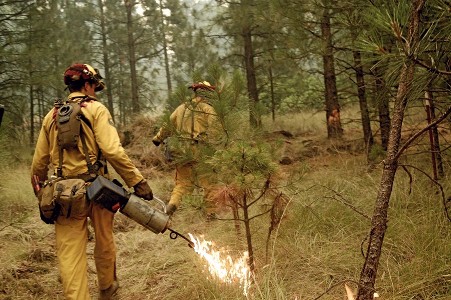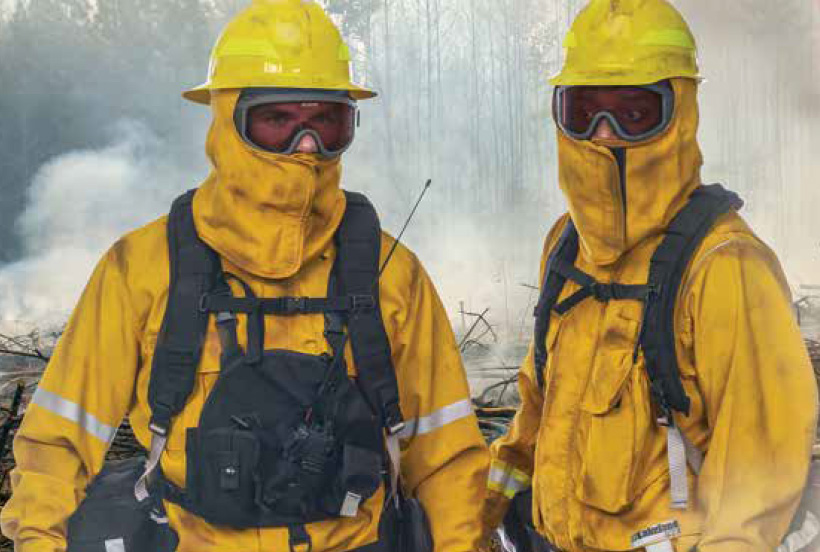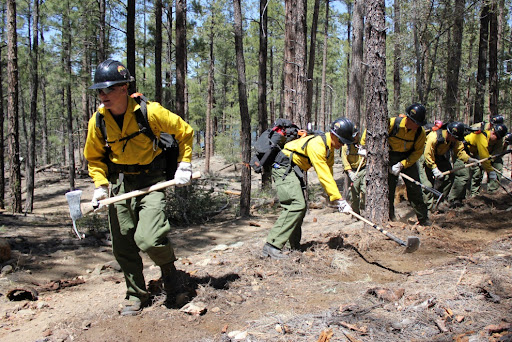Proper Gear & Standard Procedures
Firefighters must have the proper clothing, gear, and process methods to eliminate wildland and wildfires. Understanding how wildfires start and spread directly impacts the tools and methods fire emergency response teams use to stop wildland fires. Having the correct gear and following standard procedures will help mitigate health risks to firefighters and allow for a more efficient process.
Personal Protection Equipment & Tools for Fighting Wildland Fires
PPE (Personal Protection Equipment) is the main source of protection firefighters have. All PPE is required to meet NFPA 1977 Standards on Protective Clothing and Equipment for Wildland Firefighting. The NFPA 1500 specifies a minimum of the following protective gear for firefighters battling wildfires:
- Helmet
- Gloves
- Goggles or safety glasses
- Boots
- Shirt
- Pants
Apart from standard firefighting teams, Brush Certified Technicians are also required to be provided with NFPA 1977 compliant wildland fire gear. Both firefighters and Brush Certified Technicians are required to wear all wildland fire protective clothing and gear provided.
Firefighters and Brush Certified Technicians have a variety of tools at their disposal for battling and controlling wildland fires. Common wildland fire hand tools include:
- Shovels
- Rakes
- Axe
- Brush Axe
- Chainsaw
- Pulaski Tool
- Indian Can
- Water Ext.
Equipped with the proper protective clothing and tools, fire emergency teams will be prepared as best as possible to stop the harmful spread of wildfires, while also protecting themselves.
Best Methods to Control and Eliminate Wildland Fires
How to best control and stop a wildfire depends on the fire’s size, spread pattern, location, and burn rate. Methods to stop wildfires include:
- Perimeter control
- Flanking
- Firebreak
- Control Lines
- Backfire or Backburning
- Aerial Suppression
- Knockdown
- Mop-Up
There are also two main approaches that firefighter teams can take to put out a wildland fire, direct attack or indirect attack. Direct attacks are the most common approach where action is taken directly against the fire at the doge or closely parallel to the burn. Indirect attacks include actions that vary in distance from the burn to control the progression of the fire, including cutting a fire break and setting backfires. Because wildfires are constantly changing and can be unpredictable, attack methods may change.
It is essential for firefighters to keep informed on fire conditions, weather forecasts, and crew locations at all times while fighting a wildfire. Maintaining clear and consistent communication with your crew will help reduce personal danger risks to yourself and your crew in the event that the fire changes quickly and unpredictably.
Firefighters need to have the proper safety equipment, tools, and attack plan to eliminate a wildland fire. Understanding how a wildfire spreads and how to best control it will reduce risks to yourself, your crew, and the environment. A wise firefighter is one who always prioritizes safety on the job.
In addition to his leadership role at Ward Fire Equipment,
John May has more than 30 years of experience in the Fire Service. John is a Level I & II Fire instructor in the State of NY.




